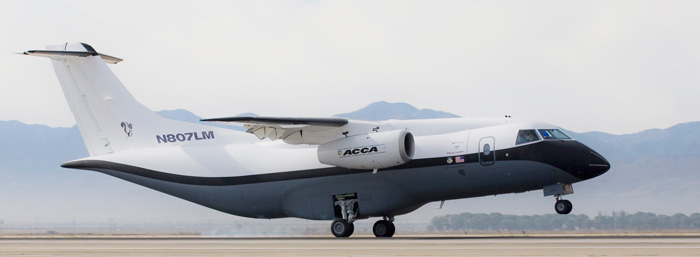
The Advanced Composite Cargo Aircraft (ACCA) is a joint program between AFRL and Lockheed Martin's Skunk Works. It is a proof of concept for using new technology composite materials for designing and manufacturing aircrafts quicker, with lower cost and better performance. The ACCA first flew in March 2009 and after approving the next phase (III) of flight tests in September it was given an X-plane designation (after a very long time for such an aircraft) and it is now officially called the X-55. It is based on the Dornier 328Jet but the fuselage behind the cockpit and the vertical tail are all new. While 328Jet was a regional airliner, the X-55 is a cargo plane capable of transporting two 463L pallets with a big ramp in the rear fuselage.---
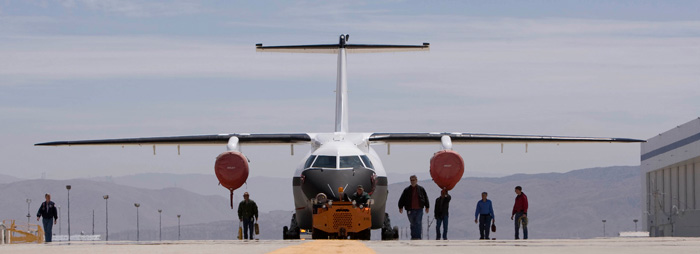
The aim of the concept is not to build a prototype for a new small cargo aircraft but a proof of concept for the designing, manufacturing, testing and general behavior of an large aircraft using advanced composite materials. The method used in X-55 reduces the assembly parts, shrinks the design timescale and eliminates most of the necessary composite fabrication infrastructure needed for manufacturing the airframe.
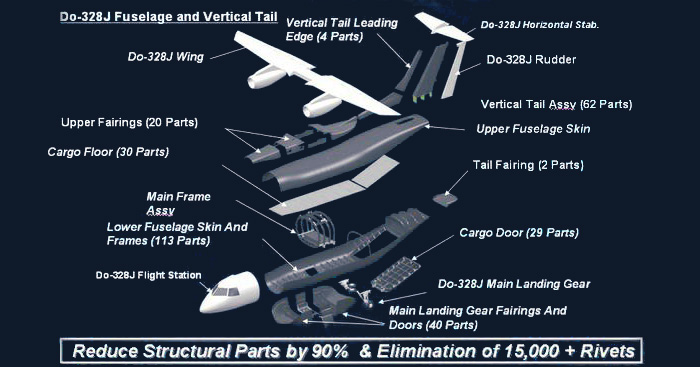
In the image above (by LM) there is a sketch of the new assembly structures. The new aircraft uses about 10 times less structural parts (300 instead of 3000) and also 10 times less mechanical fasteners (4.000 instead of ~30-40.000).
This program is the result of a 10 year research led by AFRL called 'Composite Affordability Initiative'. The actual aircraft was designed in 5 months only and its construction lasted 20 months. From start to first flight (and the FAA experimental certification) the programm in total lasted 25 months, significantly faster from a conventional aircraft of this class. The target was a total of 17 months but a problem with the lower part of the fuselage, which had to be remanufactured, caused a delay.
By expanding the flight envelop in the phase III of flight test the X-55A will create the knowledge base not only for the initial development of such and aircraft but for the actual use during the life-cycle of the aircraft.

The fuselage is created like a giant airfix model. Instead of using stringers and fasteners it had two pieces, the upper and lower fuselage. These big parts are build from a sandwiched structure with a nomex core and carbon fiber skin in a MTM-45 matrix resin.
The latter is a very crucial part of the project because it allows the material to cure in relatively low temperatures (80~180C) with vacuum bags and modular ovens placed around the structure. This eliminates the need for hugely expensive autoclaves, which also limit the maximum size of the composite part. With low temperature curing resin matrix big assemblies can be fabricated as a single part and with significantly lower cost. The few composite parts are bonded with special joints.
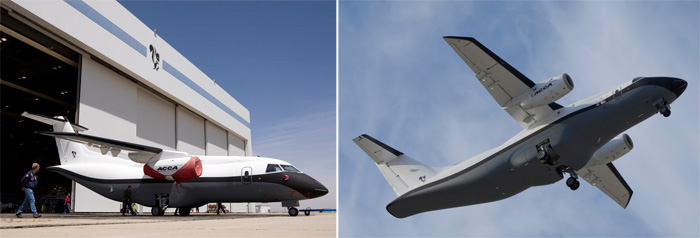
These technologies one by one are not revolutionary but ACCA wants to establish them as a mature process with wide applications, especially in military transport aircraft where the environment is much more demanding in comparison for example with a small business jet.
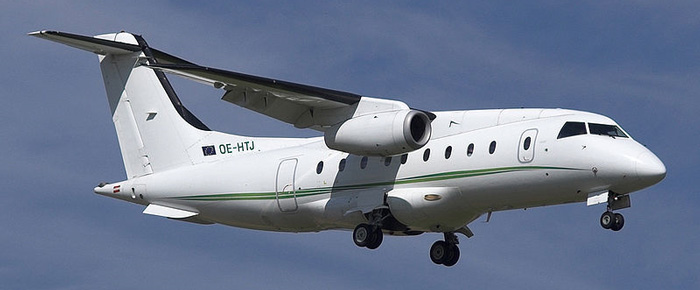
In the photo above the original Dornier 328Jet (photo by Juergen Lehle )
All other photos and images by af.mil / Lockheed Martin
Some links:
specs about the ACG MTM45-1 matrix resin (pdf)
US Air Force: link1, link2